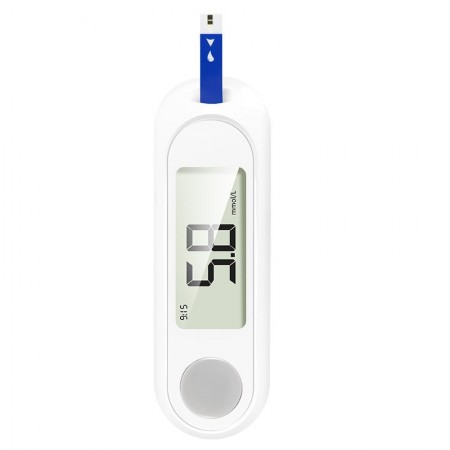Key Features:
High Precision: Engineered for accuracy, these glucometers meet stringent standards for precision, ensuring reliable readings every time. This is crucial for effective diabetes management.
Intelligent Monitoring: Many models come equipped with smart capabilities such as Bluetooth connectivity, allowing the device to sync with a smartphone app. This feature enables users to track their readings over time, identify trends, and share data directly with healthcare providers.
User-Friendly Interface: Designed for ease of use, these instruments often feature large, easy-to-read displays and simple navigation. Some even include voice guidance for visually impaired users.
Data Management: Advanced data storage and management capabilities allow users to log not just their glucose readings but also factors like meal times, medication doses, and exercise routines. This comprehensive approach helps in understanding how different activities impact blood sugar levels.
Small Sample Size: Requires only a tiny drop of blood for testing, making the process quicker and less invasive. This can be particularly beneficial for frequent testers.
Rapid Results: Delivers quick readings, usually within seconds, which is convenient for daily testing routines.
Benefits:
Enhanced Accuracy: The high precision of these instruments ensures that users receive accurate readings, which is essential for making informed decisions about diet, exercise, and medication.
Better Management: With the ability to track and analyze data over time, users can gain deeper insights into their condition and make adjustments to their lifestyle or treatment plan accordingly.
Improved Communication: By sharing data with healthcare providers, patients can receive timely advice and adjustments to their treatment plans, potentially avoiding complications.
Usage Tips:
Proper Technique: Ensure you follow the manufacturer’s instructions carefully for testing, including how to apply the blood sample correctly to the test strip.
Regular Calibration: Some devices may require calibration or coding; ensure you understand if this applies to your model and how to perform it properly.
Maintain Your Device: Keep your glucometer clean and store it along with its accessories (like lancets and test strips) in a cool, dry place. Regularly check the expiration dates on your supplies and replace them as needed.
In summary, an Intelligent High-Precision Blood Glucose Monitoring Instrument offers state-of-the-art functionality designed to assist individuals in managing their diabetes more effectively. With features aimed at improving accuracy, facilitating better data management, and enhancing communication with healthcare providers, these devices are valuable tools in maintaining optimal health. Always consult with your healthcare provider for personalized advice on using these technologies as part of your overall diabetes care strategy.




